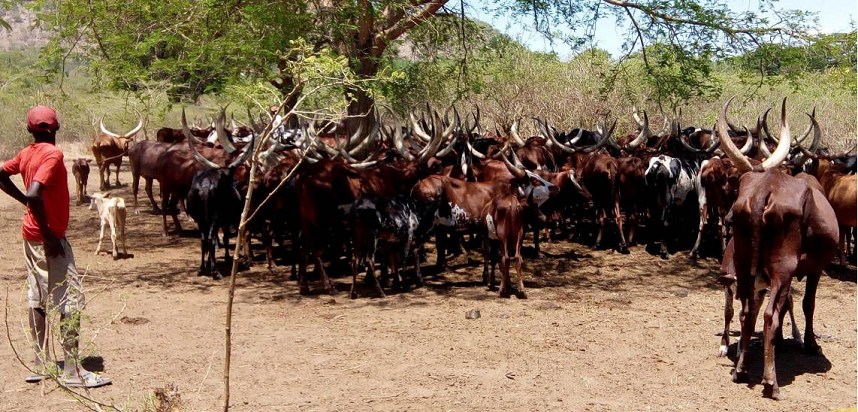Government plans to commence sustained vaccination of all livestock in the next three years in a bid to eradicate stubborn diseases like foot and mouth the tick-borne diseases.
This, according to the Ministry of Agriculture, Animal Industry and Fisheries, is aimed at claiming more valuable markets beyond Eastern Africa.
State Minister Fred Kyakulaga says the universal vaccination drive targeting all vulnerable livestock species will be on a biannual basis, for cattle, goats, sheep and pigs.
“The government will work towards achieving the status of “A Fully Vaccinated Country” under the World Animal Health Organization (OIE) and thus gain trade entry to big ready markets like China, Indonesia, Mexico and Brazil among others,” he said, while presenting the status of the Implementation of the NRM manifesto by his ministry.
The vaccination plan implementation will be accompanied by enhanced enforcement against the illegal entry of diseased animals from other countries.
On how this will be sustained in terms of the costs, the minister said the government will ask the farmers to contribute to the cost of vaccines, though the government will subsidise it.
“Government will create an Animal Disease Control Fund under which farmers will be charged a subsidized rate (cost sharing) for the vaccines and the Government will provide a one-off seed contribution towards the vaccines.”
On internal movement of livestock as a factor of disease spreading, he said that they will impose new and strengthen existing fines and levies against the culprits of illegal animal movement.
Despite Uganda being among the biggest livestock producing countries in Africa, the country earns very little (between 100 and 150 million dollars annually) in foreign exchange.
The ministry listed the rejection of Ugandan products at the international market due to non-tariff barriers, among the main challenges to the sector.
The failure to eradicate the diseases has led to a vicious cycle of challenges for the livestock and crop husbandry sectors.
Prevalent pests, vectors and diseases, notably; Fall army worm, tick resistance, Foot and Mouth Disease constrained the sourcing and timeliness of delivery of stocking materials, according to the ministry. “For example, the prolonged quarantine in source districts for livestock due to the outbreak of Foot and Mouth Disease led to slow progress in the distribution of livestock materials particularly dairy heifers,” says Kyakulaga.
Other challenges over the last two years included the inadequate capacity by most input suppliers to produce adequate and quality inputs. However, the minister admits that the limited funds availed by the government was also a constraint.”
Overwhelming demand for inputs against a limited budget; including supporting unforeseen strategic and/or special interventions which require budget re-allocations in the course of budget implementation,” he said.
The budget challenges also meant inadequate critical facilities including analytical and diagnostic laboratories, motor vehicles and cycles for field activities, high-speed internet connectivity and office space, he said. The ministry also admitted that timely distribution of planting materials was a challenge and sometimes resulted into wastage of the materials and low crop survival rates.
Willis Bashasha, the head of the Manifesto Implementation Unit at the office of the president urged the ministry to work with the Trade, Industry and Cooperatives ministry through the UNBS for an urgent solution to the counterfeit and substandard inputs.
“It can be very, very painful when you are mobilising the citizens to take up these interventions, only to go to the market and but fake products and at the end of the day, their efforts are put to waste,” he said.
He so relaid complaints by producers about the high costs and lengthy processes involved in the product certification, saying many were avoiding the requirement because of these challenges. “Unfortunately, now there are many products like cheese, ice cream, wines and others, which cannot be put on the shelves or the international market because of lack of a certificate.”
Agriculture remains the main thrust of Uganda’s economic growth and is among the four key sectors highlighted in the Uganda Vision 2040 that that the government hopes will greatly contribute to wealth and employment creation.
The sector also contributed 24.1 percent of the national GDP and continues to employ over 70 percent of Uganda’s population directly or indirectly.
This, according to the Bank of Uganda and other agencies, is the reason why there is need to create more non-farm jobs. “Sustainable growth cannot be possible when a sector contributing less than a quarter of the GDP is employing almost three quarters of the country’s workforce,” says BOU.
According to available data in absolute terms the GDP of the agriculture sector increased from 35.36 trillion shillings in the financial year 2020/21 to 39.15 trillion in 2021/22. The value of agricultural exports registered a better growth of 24 percent from 1.68 billion dollars in 2020/21 to 2.1 billion in 2021/22.
It thereby contributed 58 percent to the total exports in the year 2021/22 compared to 33 percent in 2020/21. The performance was attributed to the increased volumes and quality of coffee, dairy, fish and tea exported.





